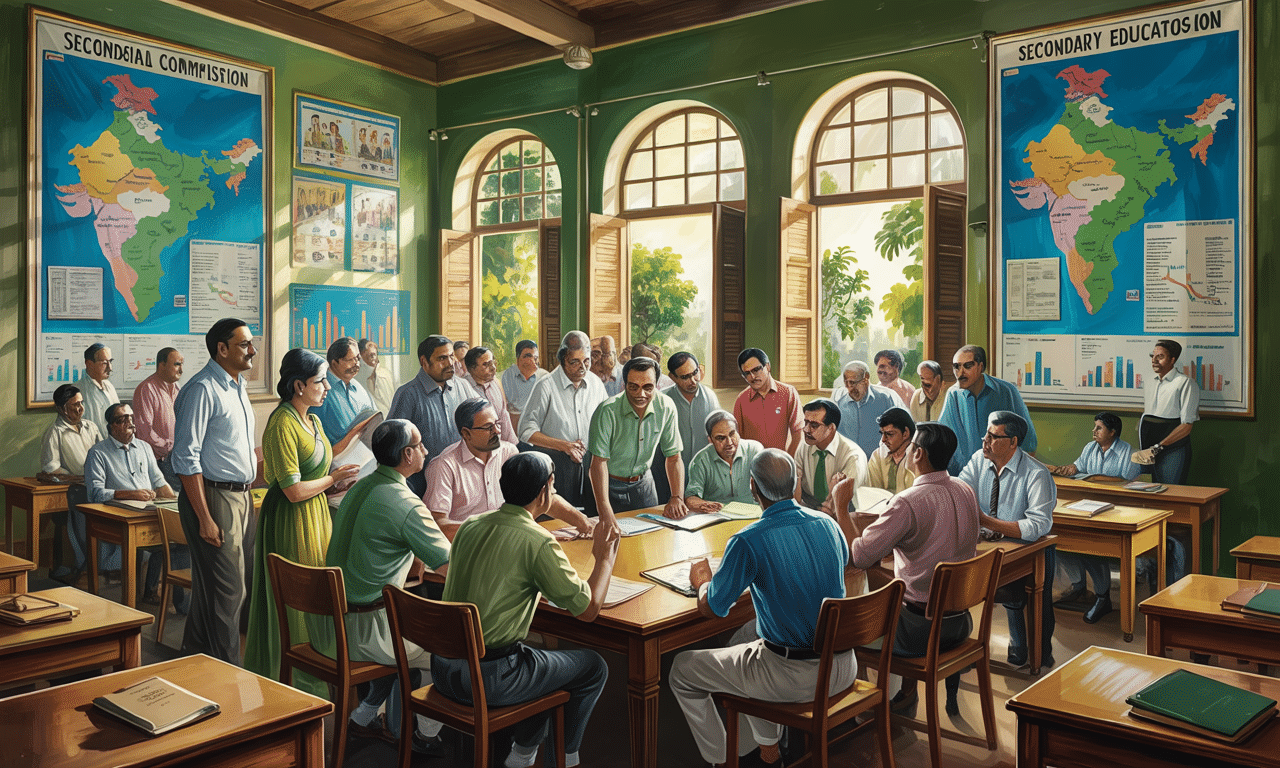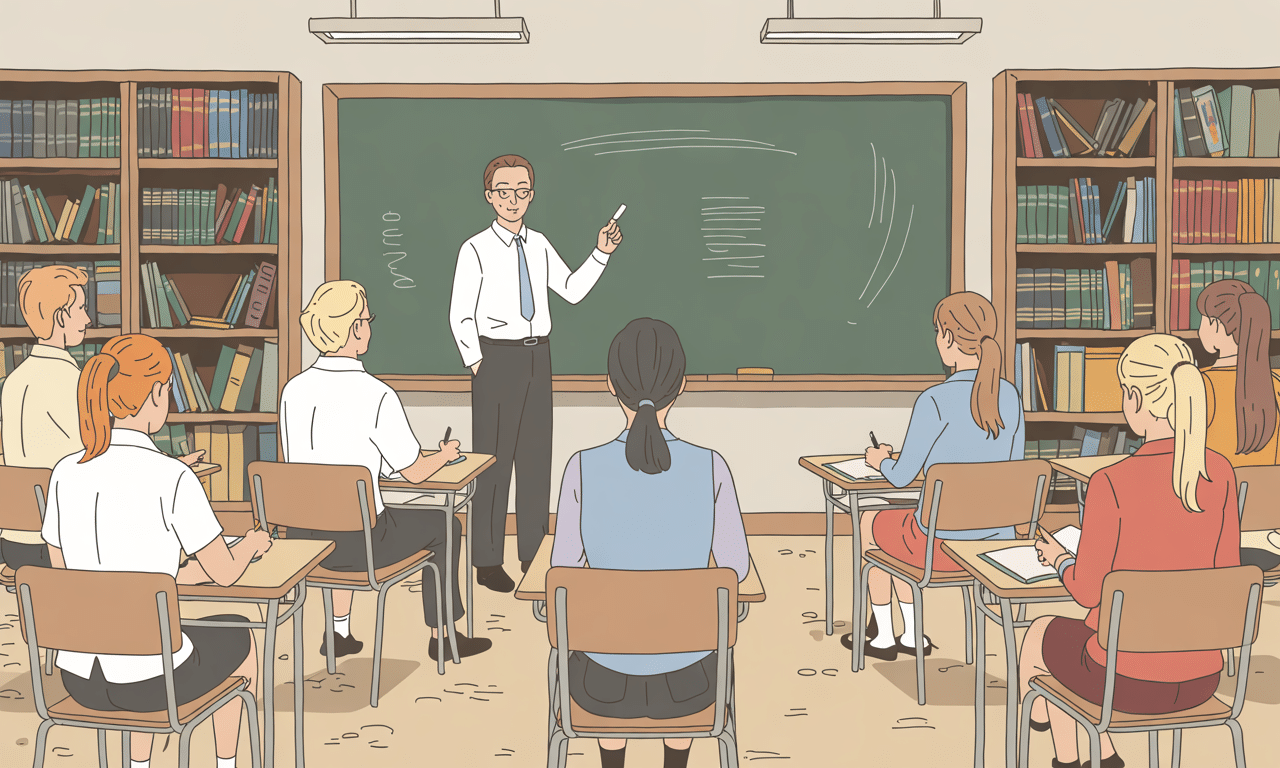Educational Committees and Commissions - 1 Chapter Notes | Crash Course for UGC NET Education PDF Download
Introduction
Teacher education is considered one of the most important means of social and national development in India. However, a large number of teachers were found to be untrained, leading to concerns about both the quality and quantity of teacher education. After gaining independence, efforts were made to address the issues of access, quality, and relevance in the teacher education system. This need for improvement has been acknowledged by various commissions and committees post-independence. Transformative Learning
Transformative Learning
The Government of India has set up several commissions and committees over time to address different issues related to general education and teacher education. One of the early efforts was the appointment of the 'University Education Commission' by the Government of India, chaired by Dr. S. Radhakrishnan, which submitted its report on university education in 1949. However, the commission also reviewed secondary education in India and highlighted it as the weakest link in the educational system, calling for urgent reforms. In response, the Government of India established the Secondary Education Commission in 1952, chaired by A.L. Mudaliar, to address the issues in secondary education.
Secondary Education Commission (1953)
The Government of India established the Secondary Education Commission on September 23, 1952, to evaluate and recommend improvements for secondary education in the country. Chaired by Dr. A. Lakshmanaswami Mudaliar, the Vice-Chancellor of Madras University, the commission aimed to address various aspects of secondary education. Educational Reform in India
Educational Reform in India
Known as Mudaliar's Commission, it played a crucial role in shaping India's secondary education system. The commission prepared a detailed questionnaire and sought inputs from educational experts, teachers, and institutions across India. Following an extensive tour of the country to gather firsthand information on educational challenges, the commission presented its report in August 1953.
Objectives of Secondary Education Commission
The commission has proposed the objectives of secondary education in the following manner:
To Foster Ideal Citizens: The commission acknowledged that a nation cannot progress without a strong sense of nationalism and social responsibility. Therefore, the aim of secondary education should be to nurture ideal citizens who are responsible and willing to make sacrifices for their motherland. Empowered Citizenship
Empowered Citizenship
To Enhance Earning Potential: After completing secondary education, individuals should possess the skills necessary to earn a sufficient living. To develop this capacity, vocational subjects should be integrated into the curriculum.
To Cultivate Leadership Qualities: Secondary education should focus on developing leadership qualities in students, which are essential for the overall development of the country.
To Instill Human Values: As social beings, individuals should embody virtues such as cooperation, discipline, love, kindness, and a sense of brotherhood. The secondary education curriculum must include subjects like science, literature, fine arts, humanities, music, and dance to help students cultivate these virtues.
Important Recommendations
Secondary Education
- Age Group: Education for children aged 11 to 17 years.
- Structural Changes: Proposing to eliminate intermediate colleges by integrating class 11 into secondary schools and class 12 into undergraduate programs.
- Multi-Purpose Schools: Establishing schools that cater to diverse student abilities and needs.
- Degree Duration: Standardizing degree courses to three years.
- Pre-University Course: Introducing a one-year course for high school graduates before university admission.
 Inclusive Learning
Inclusive Learning - Access to Professional Courses: Allowing students who complete Pre-University courses to enter professional programs.
- Vocational Training: Implementing vocational and practical courses in the curriculum.
- Technical Institutions: Setting up technical schools near industrial areas for hands-on training.
Teacher Education Recommendations
- Training Duration: A two-year training program for non-graduates and a one-year course for graduates aspiring to be teachers.
- Extracurricular Training: Incorporating training in one or two extracurricular activities for teachers.
- Professional Development: Emphasizing the need for refresher courses, short-term workshops, and specialized training for current teachers.
- Research in Training Colleges: Encouraging research activities in teacher training institutions.
- Part-Time Courses for Untrained Teachers: Offering special part-time training programs for teachers without formal training.
- Admission to M. Ed Courses: Allowing trained graduates with teaching experience to enroll in Master of Education programs.
- Types of Training Institutions: Streamlining teacher training to two main types of institutions.
- Practical Training: Providing practical training in workshops and special subjects during refresher courses.
- Extracurricular Training: Ensuring teacher trainees receive training in various extracurricular activities.
- Stipends and Fees: Offering stipends to student teachers during training and waiving fees in training colleges.
- Realistic Training Methods: Advocating practical and realistic training methods in institutions.
About Sir Arcot Lakshmanswami Mudaliar
- Background: An Indian educationist and physician known for his significant contributions to education and health.
- Academic Leadership: Longest-serving vice-chancellor of the University of Madras, holding the position for 27 years.
- International Roles: Chairman of the World Health Organization (WHO) executive board in 1949 and 1950.
- Awards: Received the Padma Bhushan in 1954 and the Padma Vibhushan in 1963 for his services.
Kothari Education Commission (1964-66)
The National Education Commission, commonly known as the Kothari Commission, was established in July 1964 under the leadership of Daulat Singh Kothari. The commission identified significant shortcomings in India's professional education system. Modernizing Education
Modernizing Education
Deficiencies in India's Education System
- Poor Standards: The commission found that the standards of teacher education were subpar and mediocre.
- Isolation: Teacher education was detached from mainstream academic life, leading to a lack of integration.
- Incompetent Staff: Training colleges for teachers lacked qualified and competent staff, impacting the quality of training.
- Traditional Methods: Teacher training methods were outdated and rigid, following set patterns without flexibility in practice teaching.
Recommendations for Improvement
- Integration: Remove the isolation of teacher training from mainstream academic life.
- Expansion: Expand teacher training facilities to accommodate more trainees.
- Continuing Education: Ensure ongoing professional education for all teachers.
- Standards Maintenance: Create agencies to maintain standards at both central and state levels.
- Academic Discipline: Treat education as an independent academic discipline, introducing it as an optional subject at BA and MA levels.
- Schools of Education: Establish schools of education within universities.
- Integrated Courses: Introduce integrated courses of general and professional education to broaden teacher prospects.
- Internship Programs: Include internship programs alongside practice teaching to expose future teachers to real classroom environments.
 Teacher Development
Teacher Development - Increasing Working Days: Increase the number of working days in teacher training programs.
- Financial Support: Abolish fees and provide scholarships and loans to student teachers.
- Demonstration Schools: Establish demonstration schools for pupil-teachers to gain practical experience.
- Special Courses: Organize special courses for graduates entering primary teaching.
- Quality Improvement: Enhance the quality of teacher training institutions.
- State Board of Teacher Education: Establish a board responsible for all functions related to teacher education at various levels and fields.
Implementation and Impact
- The Kothari Commission's recommendations led to significant changes in teacher training programs, many of which were implemented effectively.
- Regional Institutes of Education (RIEs): Four-year courses were initiated at different Regional Institutes of Education in 1963 as a result of the commission's recommendations. These institutes were established in various parts of India to address regional educational needs.
Overview of Regional Institutes of Education (RIEs)
- Formerly Known: RIEs were previously called Regional Colleges of Education.
- Constitutional Unit: RIEs are constitutional units of the National Council of Educational Research and Training (NCERT).
- Establishment: The Government of India set up RIEs in 1963 across different regions of India.
- Current Locations: RIEs are currently located in Ajmer, Bhopal, Bhubaneswar, Mysore, and Shillong.
- Objectives: The primary goal of RIEs is to improve the quality of school education through innovative pre-service and in-service teacher education programs.
- Integrated Courses: RIEs offer four-year integrated courses such as B.Sc B.Ed and B.A B.Ed, combining general and professional education.
National Policy of Education (1986)
After gaining independence, the primary focus of the Government of India was to rebuild and reform the educational system. To promote education across the country, both in urban and rural areas, the National Policy of Education (NPE) was formulated based on the recommendations of the Kothari Commission. The first NPE was introduced by Indira Gandhi in 1968, and the second by Rajiv Gandhi in 1986. Inclusive Learning
Inclusive Learning
The 1986 NPE aimed at eliminating disparities and ensuring equal educational opportunities, particularly for women, Scheduled Tribes (STs), and Scheduled Castes (SCs). It was adopted by Parliament in May 1986.
Key Recommendations of NPE, 1986
- National System of Education: All students should have access to education of comparable quality, regardless of caste, creed, location, or gender.
- Common School System: Implementation of a common school system to ensure equal educational opportunities.
- Curricular Framework: Promotion of values such as cultural heritage, democracy, gender equality, environmental protection, social barrier removal, and scientific temper.
- Secular Values: All educational programs must adhere to secular principles.
- Minimum Level of Learning: Establishment of minimum learning levels for each stage of education.
- Inter-Regional Mobility: Facilitation of equal access to higher and technical education for students from different regions.
- Open and Distance Learning: Increased opportunities for open and distance learning for various groups, including youth and professionals.
Strengthening Educational Institutions
- The NPE emphasized the role of institutions like the University Grants Commission (UGC),All India Council of Technical Education (AICTE),Indian Council of Agricultural Research (ICAR), and the Indian Medical Council (IMC) in shaping the National System of Education.
- It also recommended the involvement of the National Council of Educational Research and Training (NCERT),National Institute of Educational Planning and Administration (NIEPA),National Council for Teacher Education (NCTE), and the National Institute of Adult Education (NIAE) in policy implementation.
Teacher Education Recommendations
- Continuous orientation and upgrading of teacher training institutions.
- Establishment of District Institutes of Education and Training (DIET) for pre-service and in-service training.
- Creation of the National Council for Teacher Education (NCTE) to accredit institutions and provide guidance on curriculum and methods.
- Networking between teacher education institutions and university departments of education.
Acharya Ramamurti Committee (1990)
- The committee reviewed the NPE (1986) and suggested that the first degree course in teacher education should not be offered through correspondence.
- It recommended encouraging more institutions to introduce four-year integrated courses in teacher education, similar to those offered by Regional Colleges of Education.
Pioneer Institutions of Education in India
- NCERT: Established in 1961, NCERT advises and assists the government on academic matters related to school education. It implements the National Curriculum Framework (NCF) and develops teaching-learning materials.
- NCTE: Set up under the NCTE Act, 1993, NCTE oversees standards and procedures in the Indian education system. It was previously an advisory body since 1973, focusing on teacher education development.
The National University of Educational Planning and Administration (NUEPA) was set up by the Government of India to focus on research and development in the field of education. Being a Central University, NUEPA is entirely funded by the Government of India. The university offers M Phil, PhD, and part-time PhD programs in educational policy, planning, and administration, approaching these subjects from a broad interdisciplinary perspective within the social sciences.
Key Highlights of NPE (1986)
- Scholarships were expanded to include all categories of students.
- Adult education was promoted across the country.
- Efforts were made to employ more teachers from Scheduled Castes (SCs) and Scheduled Tribes (STs) communities.
- Incentives were provided to poor families to encourage regular school attendance for their children.
- New educational institutions were developed to serve all segments of society.
- Housing and service facilities were improved.
- A Child-Centered Approach was advocated for primary education, leading to the launch of Operation Blackboard to expand primary schools nationwide.
- The Open University system was expanded, highlighted by the establishment of the Indira Gandhi National Open University in 1985.
- The policy was recognized for its Rural University Model, inspired by Mahatma Gandhi's philosophy, aiming at grassroots economic and social development in rural India.
- In 1992, the National Policy of Education was modified based on the government’s Common Minimum Programme. This revision introduced common national-level tests to maintain professional standards, reduce overlapping issues, and alleviate the physical, mental, and financial burdens on students and parents caused by multiple entrance examinations.
National Policy of Education (1992)
- The National Policy of Education (NPE) was first adopted by the Parliament in May 1986.
- In May 1990, a committee led by Acharya Ramamurti was formed to review the NPE and suggest modifications. This committee submitted its report in December 1990.
- Following this, in July 1991, the Central Advisory Board of Education (CABE) requested another committee, chaired by Shri N. Janardhana Reddy, to consider further modifications to the NPE. This committee was tasked with considering the Ramamurti Committee's report and other relevant developments.
- The committee chaired by Reddy submitted its report in 1992, recommending changes to the NPE.
Key Highlights of NPE (1992)
- The committee suggested various modifications to enhance education in India.
- Non-Formal Education for Girls: Emphasized the need for non-formal education for girls aged 15-35.
- Support for Weaker Sections: Proposed special provisions for students from SC, ST, OBC, and minority communities, including mid-day meals, stationery, books, and free education.
- Quality Improvement in Secondary Education: Recommended enhancing the quality of secondary education up to the +2 level.
- Support for Backward Minorities: Suggested providing hostel facilities, polytechnic education, coaching, and removing barriers to education for backward minorities.
- Role of NGOs: Encouraged NGOs to establish special schools and provide vocational training.
- National Literacy Mission: Aimed at making individuals self-dependent through education.
- Early Childhood Care and Education: Proposed establishing Anganwadis and Balwadis for early childhood care and education.
 Empowering Education
Empowering Education - Elementary Education in Low-Density Areas: Recommended establishing schools in low-density areas with minimum teacher requirements based on enrollment.
- Navodaya Vidyalaya Schools: Emphasized quality enhancement in Navodaya Vidyalaya schools as role models for other schools.
- Vocational Education: Suggested aligning vocational education with industry and employment needs.
- Higher Education: Proposed self-financed universities and at least one university in each state, with technical assistance from IGNOU.
- Skill and Competency Focus: Recommended delinking jobs from degrees and focusing on skills and competencies for youth.
- Rural Universities and Institutes: Suggested establishing rural universities and providing technical and financial support to NGOs and government institutions.
- All India Council of Technical Education (AICTE): Proposed establishing AICTE.
- Cultural Bond in Education: Emphasized establishing a cultural bond in education from regional to national and global levels.
- Research Impact: Suggested that research results should influence society, not just obtain degrees.
- Language Development: Promoted a three-language formula and the development of Hindi as the national language.
- Media and Technology in Education: Recommended including media, radio, computers, and new technologies in the education process.
- Sports and Physical Activities: Emphasized the importance of sports and physical activities.
- NCC and NSS Participation: Suggested motivating students to participate in the National Cadet Corps (NCC) and National Service Scheme (NSS).
- Minimum Level of Learning: Recommended achieving a minimum level of learning in each subject and making the evaluation process more flexible.
- Constitutional Status to NCTE: Suggested giving constitutional status to the National Council for Teacher Education (NCTE) and establishing District Institutes of Education and Training (DIETs), Colleges of Teacher Education (CTEs), and Institutes of Advanced Studies in Education (IASEs).
- Decentralization of Education: Proposed decentralizing education and allowing NGOs to participate in the education sector.
|
2 videos|67 docs
|
FAQs on Educational Committees and Commissions - 1 Chapter Notes - Crash Course for UGC NET Education
| 1. What were the key highlights of the National Policy on Education (NPE) 1992? |  |
| 2. What are the important recommendations made by the NPE 1992? |  |
| 3. How does the NPE 1992 address the issue of educational equity? |  |
| 4. What role do educational committees and commissions play in shaping education policies in India? |  |
| 5. How has the NPE 1992 influenced subsequent educational policies in India? |  |
















